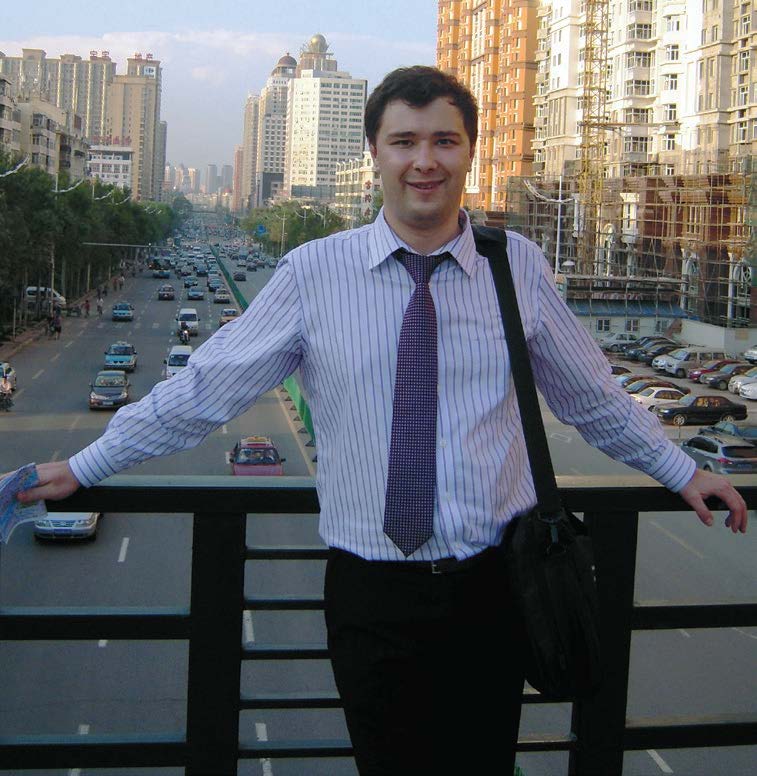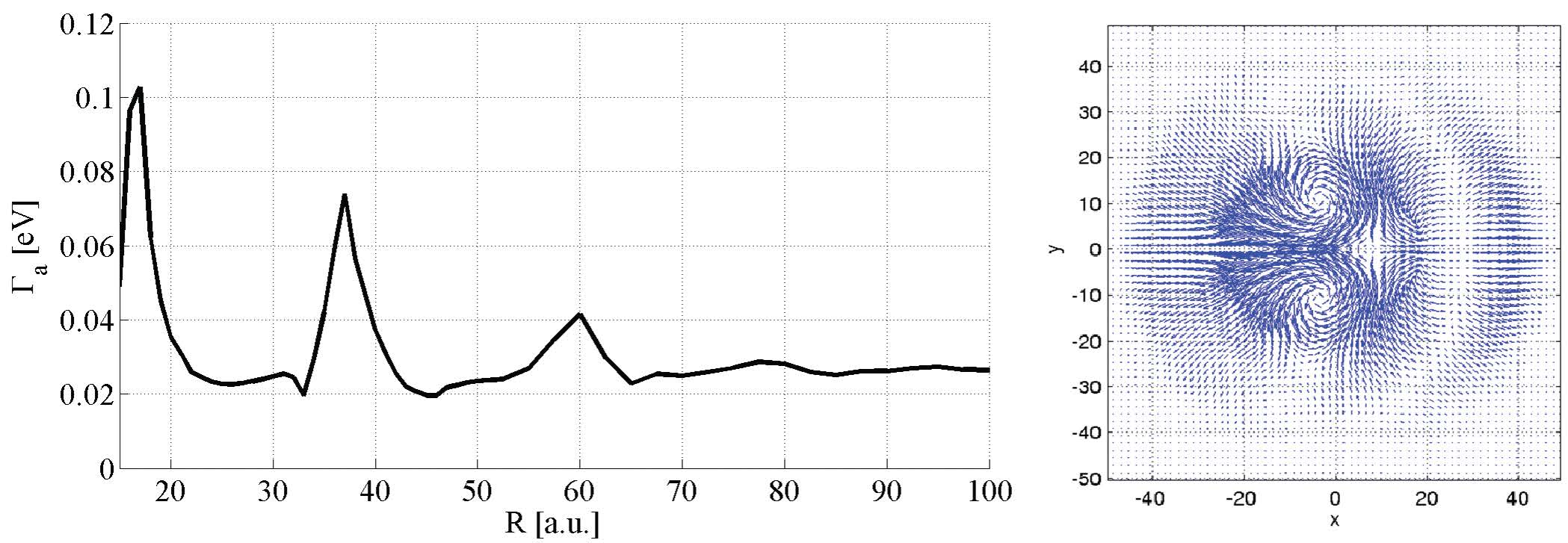
I.K. Gainullin
The scientists of Physical faculty of Moscow State University in cooperation with colleagues from Tomsk Polytechnic University for the first time have numerically investigated the 3D effects of electron transfer arising during ion-surface/ nanosystem interactions. The obtained analytical results are important for quantitative diagnostics of solid body surfaces and nanosystems by means of ion beams.
The resonant charge transfer (RCT) between negative ion and metallic nanosystems was investigated by means of high-performance ab initio 3D numerical solver. During RCT electron was shown to occupy successively nanosystem’s eigen states along z, ρ, φ coordinates. Electron tunneling into nanosystem is a reversible process, because after some time the electron propagates back to the ion.

Demonstration of quantum-size effect – the non-monotone dependence of RCT efficiency on nanosystem’s size (left) and visualization of quantum vortices (right).
The RCT efficiency on a nanosystem was found to exhibit quantum size effects as well as lateral ion position dependence. This means that during ion-surface interaction the nanosystem’s size and the ion trajectory strongly influence the final charge state of the ion. Also it was shown that electron’s density currents form the quantum vortices; this result is rather nontrivial for the static systems. Also the limits of the wide-used adiabatic approximation (rate equation) for the RCT calculation with nanosystems are defined.
I.K. Gainullin, M.A. Sonkin. Physical Review A. 92, 022710 (2015). doi:10.1103/Phys.Rev.A.92.022710